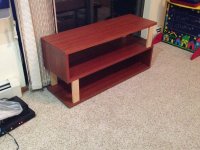Steven Owen
Member
- Joined
- Oct 4, 2017
- Messages
- 443
It’s enough to make a grown man cry. Teak appears to disappearing from shelves at your local lumber yards, plywood shops, and hardwood lumber resellers.
Back in 2014 it was relatively easy to find teak hardwood for your outdoor projects. Over the past for years it’s becoming very scare, and hard to come-by. It’s very sad. I often preferred teak over clear cedar for outdoor furniture projects. It was easier to apply teak wood dyes to teak vs cedar, teak doesnt split easy like cedar and marine varnishes generally last longer on teak vs cedar.
Teak is really a go-to hardwood for creating highly durable outdoor furniture without coughing up a pretty penny for Mahogany.
It’s very sad to see teak becoming so scarce. Does anyone know what causing the Teak to disappear from store shelves? There doesn’t seem to be much on Google.
Back in 2014 it was relatively easy to find teak hardwood for your outdoor projects. Over the past for years it’s becoming very scare, and hard to come-by. It’s very sad. I often preferred teak over clear cedar for outdoor furniture projects. It was easier to apply teak wood dyes to teak vs cedar, teak doesnt split easy like cedar and marine varnishes generally last longer on teak vs cedar.
Teak is really a go-to hardwood for creating highly durable outdoor furniture without coughing up a pretty penny for Mahogany.
It’s very sad to see teak becoming so scarce. Does anyone know what causing the Teak to disappear from store shelves? There doesn’t seem to be much on Google.

